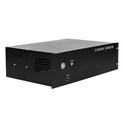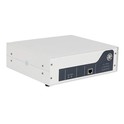Hey there! I'm a supplier of 6000w ultrasonic generators, and today I wanna chat about the power consumption of these bad boys. You might be wondering, "What's the deal with the power consumption of a 6000w ultrasonic generator?" Well, stick around, and I'll break it down for you.
First off, let's get the basics straight. The "6000w" in a 6000w ultrasonic generator refers to its rated power. But that doesn't mean it's constantly gulping down 6000 watts of electricity. Just like your car doesn't always use its full horsepower, an ultrasonic generator doesn't always run at its maximum power.
The actual power consumption of a 6000w ultrasonic generator depends on a bunch of factors. One of the main ones is the load. Think of it like this: if you're using the generator for a light-duty task, it won't need to work as hard as it would for a heavy-duty one. For example, if you're using it to clean small, delicate parts, the power consumption will be lower compared to using it for large - scale industrial cleaning or material processing.
Another factor is the duty cycle. The duty cycle is the ratio of the time the generator is actually operating to the total time. If the duty cycle is low, say 20%, it means the generator is only running for 20% of the total time. So, even though it's a 6000w generator, its average power consumption over that period will be much less.
Let's do some math to make it clearer. Suppose the 6000w ultrasonic generator has a duty cycle of 30% and it runs for an hour. The theoretical power consumption without considering efficiency would be 6000 watts * 0.3 (30% duty cycle) * 1 hour = 1800 watt - hours or 1.8 kilowatt - hours. But in real - world scenarios, we also need to take into account the efficiency of the generator.
No generator is 100% efficient. There are always some losses due to things like heat dissipation, electrical resistance, and mechanical friction. A typical ultrasonic generator might have an efficiency of around 80 - 90%. So, if our generator has an efficiency of 85%, the actual power consumption for that 1 - hour run with a 30% duty cycle would be (1800 watt - hours) / 0.85 ≈ 2118 watt - hours or 2.12 kilowatt - hours.
Now, you might be comparing the 6000w ultrasonic generator with other models. We also offer 2000W Ultrasonic Generator, 1000W Ultrasonic Generator, and 4000W Ultrasonic Generator. These smaller - wattage generators generally have lower power consumption, but they're also suitable for different applications.
The 1000w and 2000w generators are great for small - scale operations, like jewelry cleaning or small - part manufacturing. Their power consumption is relatively low, making them cost - effective for these kinds of tasks. On the other hand, the 4000w and 6000w generators are designed for more heavy - duty applications. While they do consume more power, they can handle larger workloads much more efficiently.


When it comes to cost - effectiveness, it's not just about the power consumption. You also need to consider the productivity. A 6000w generator can complete a large - scale job in a much shorter time compared to a 2000w generator. So, even though it consumes more power, the overall cost per unit of work done might be lower.
For example, let's say you're running a factory that needs to clean a large number of metal parts. Using a 2000w generator might take several hours to complete the job, and you'll need to pay for the electricity for that entire time. A 6000w generator, on the other hand, can finish the same job in a fraction of the time. So, even though it uses more power per hour, the total power consumption for the job might be similar or even lower, and you'll save on labor and time costs.
In addition to the factors I've mentioned, the power supply voltage can also affect the power consumption. If the input voltage is not within the recommended range, the generator might have to work harder to maintain its output power, which can increase the power consumption. It's really important to make sure the generator is connected to a stable and appropriate power source.
Also, the age and condition of the generator play a role. As a generator gets older, its efficiency might decrease due to wear and tear. Components might become less efficient, and there could be more losses. Regular maintenance can help keep the generator running at its best and keep the power consumption in check.
To sum it up, the power consumption of a 6000w ultrasonic generator is a complex thing. It's not just a simple matter of looking at the rated power. You need to consider the load, duty cycle, efficiency, power supply voltage, and the condition of the generator. But overall, a 6000w ultrasonic generator is a powerful tool that can offer great productivity for heavy - duty applications.
If you're in the market for an ultrasonic generator, whether it's the 6000w model or one of our other options, I'd love to chat with you. We can figure out which generator is the best fit for your specific needs and help you understand the power consumption and cost - effectiveness. So, don't hesitate to reach out and start a conversation about your procurement requirements.
References
- Basic electrical engineering textbooks for understanding power, efficiency, and duty cycle concepts.
- Industry research on ultrasonic generator performance and power consumption.





